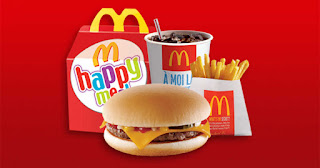The highly persuasive techniques that these companies use include:
- Convenience
(According to a 2006 Eating Patterns In America report released by The NPD Group) Americans value convenience over their own health. They will knowingly spend money on unhealthy food if it is ready-made for them. (In terms of my own project I could look into the convenient sachets used for porridge etc.)
A series of social psychology studies found that just thinking about fast food made people feel more hurried, impatient and less likely to slowly savour the experience. The reverse of this would be to encourage the consumer to slowly enjoy the product.
- Mouthwatering Vocabulary
Fast food companies will tell you what you want to taste. i.e. Subway’s: “Eat Fresh”. McDonald’s “I’m Loving It!” and so on and so on. The taste of the food is one side of things, but the description of the food can influence what customers think. Consumers are subliminally trained to believe what the taste is.
- Colours
Studies have shown that warm colours such as red and yellow activate hunger as well as grab attention. Also, we mentally connect red with immediacy (used in stoplights and traffic signs).
Research has proven that exposure to unhealthy food advertising has had an impact on child obesity in this country, with one in five children starting school overweight. The strain on the NHS is also substantial. Although fast food advertising is regulated on TV, it is very difficult to regulate advertising on social media. Furthermore, the persuasion techniques go further than the advertising deeper into the core brand. The colours, vocabulary, etc.




No comments:
Post a Comment